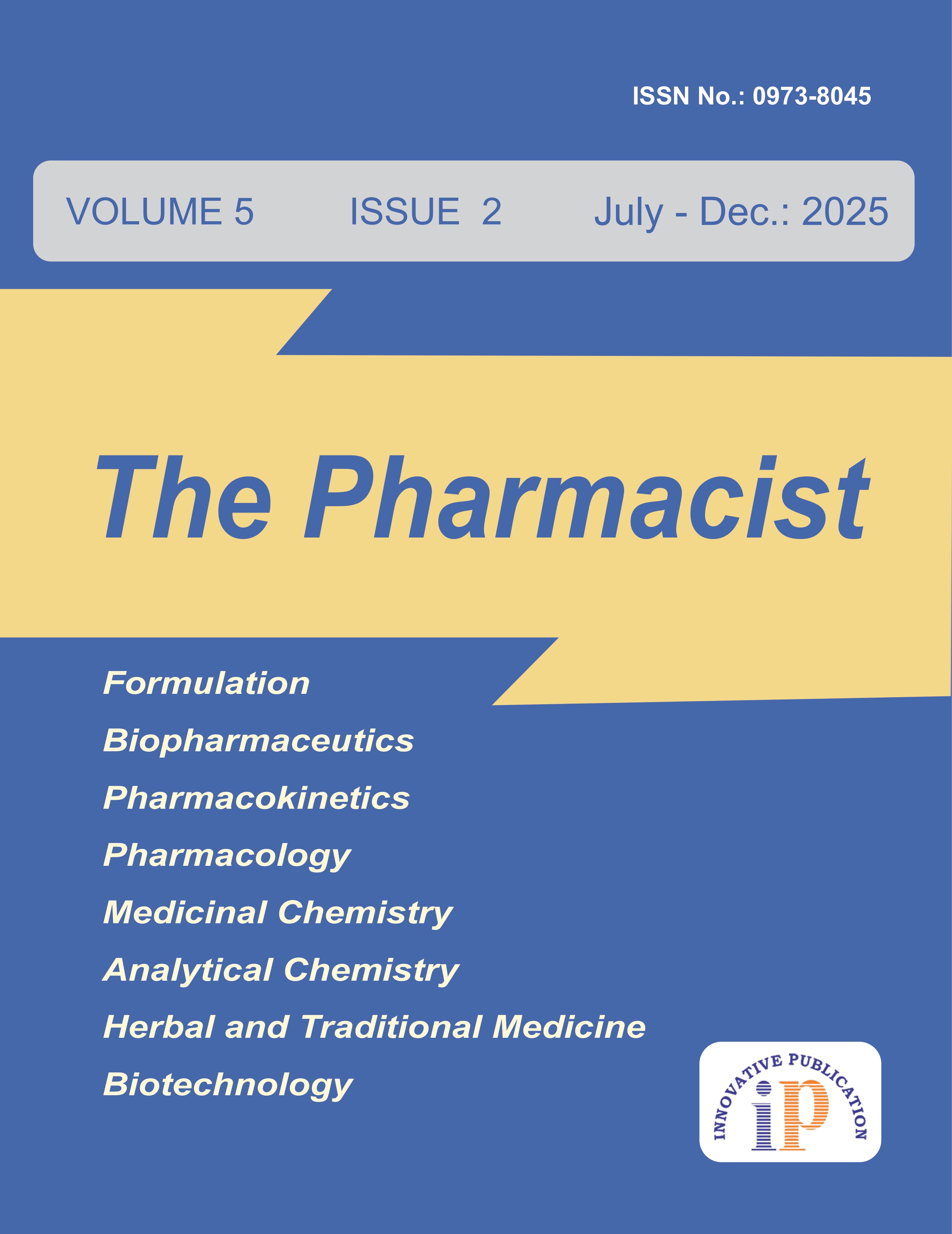The Pharmacist
The Pharmacist (Pharmacist) is an open-access, peer-reviewed pharmacy journal, published half-yearly, as print and online by the The Pharmacist (Pharmacist) since 2025. With the aim of faster and better dissemination of knowledge, we will be publishing articles ‘Ahead of Print’ immediately upon acceptance of manuscript. In addition, the journal allows free access (Open Access) to its contents, which is likely to attract more readers and citations to articles published in journal. Manuscripts should be prepared in accordance w...

QbD approach to HPLC method development and validation of the simultaneous estimation of sulbactam and durlobactam in pharmaceutical dosage form
Page: 6-13
Background: Sulbactam (SLM) and durlobactam (DOM) are β-lactamase inhibitors co-formulated for the treatment of multidrug-resistant Acinetobacter baumannii infections. A robust, reproducible, and regulatory-compliant analytical method is required for their routine quality control.
Objective: To develop and validate a stability-compliant RP-HPLC method for the simultaneous estimation of SLM and DOM in pharmaceutical dosage forms using the Analytical Quality by Design (AQbD) framework.
Methods: Critical method parameters were identified using Ishikawa diagram and FMEA. A Box–Behnken design (BBD) with 17 randomized runs was applied to study the effects of flow rate, pH, and organic phase proportion on resolution (Y₁) and tailing factor (Y₂). The method was optimized using response surface modelling, and the method operable design region (MODR) was established. The optimized conditions employed a Hypersil Gold C18 column (150 × 3.0 mm, 3 µm), methanol:0.1% formic acid (65:35, v/v; pH 3.5) as mobile phase, flow rate 1.0 mL·min⁻¹, and detection at 220 nm. Validation was performed in line with ICH Q2(R1).
Results: Resolution was predominantly influenced by organic proportion and flow rate, while tailing was affected by curvature near MODR boundaries. The selected operating point (65% methanol, pH 3.5, 1.0 mL·min⁻¹) yielded sharp, symmetric peaks (Rt: 2.16 min for SLM; 3.44 min for DOM) with resolution ≥ 2.0. Validation confirmed linearity (10–50 µg·mL⁻¹, R² = 0.999), precision (%RSD < 2%), accuracy (98–102%), robustness, and sensitivity (LOD: 0.38 µg·mL⁻¹ SLM, 0.08 µg·mL⁻¹ DOM). System suitability criteria were consistently met.
Conclusion: The developed RP-HPLC method is simple, precise, accurate, and robust, fulfilling AQbD and ICH Q2(R1) requirements. Its reliance on readily available reagents and UV detection makes it highly suitable for routine quality control and regulatory compliance. Future work should expand to forced degradation and peak purity studies to confirm stability-indicating performance.
Article Metrics
- Visibility 97 Views
- Downloads 68 Views
- DOI 10.18231/j.pharmacist.89611.1759917827
-
CrossMark
- Citation
- Received Date August 11, 2025
- Accepted Date September 18, 2025
- Publication Date October 08, 2025